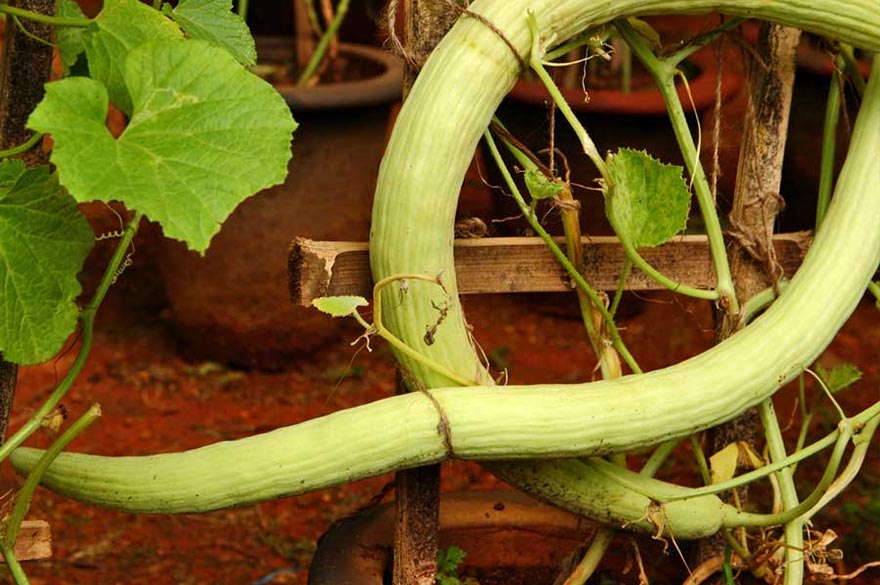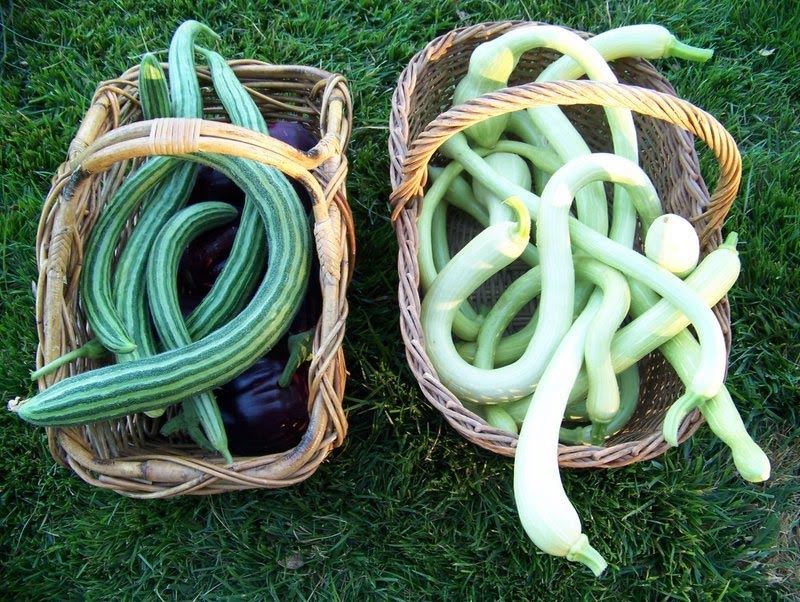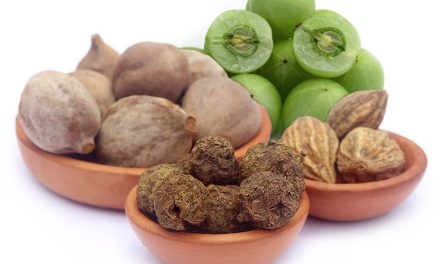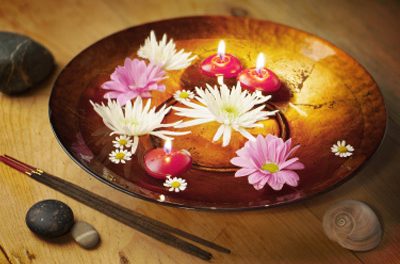Ayurveda says that medicine is that which generates trust in the patient of continuing good health and helps him getting rid of disease. Since the body is directly associated to nature, most of the diseases generate due to natural imbalance. Hence, a medicine should be a rich source of natural elements. Additionally, if in the name of medicines some chemical elements are used on the body, sooner or later it would have its adverse impact on it. For ever-lasting good health it is important that we search for and locate medicine for physical or mental illness from nature.
In the name of modern medicines, we commit atrocities on the body. To end it, Patanjali Ayurveda has, after conducting deep and intense research on medicinal herbs, and based on the nature of different diseases, established proper natural eating habits to solve most common problems. Based on the same conclusion, we are presenting the series ‘Health in Medicinal Herbs’. People can read all of this in detail in the book ‘Ayurveda Jadi-Buti Rahasya’ and thus attain long lasting good health. In this edition, we are presenting the details on the qualities of snake cucumber
Name of Snake Cucumber in Different Languages
Snake Cucumber should not be confused with Snake Gourd. They both look similar but are different plants, and have very different tastes and uses. Snake Cucumber tastes very similar to ordinary cucumber, but it does not have the bitter after taste, the skin is softer, and does not need to be peeled to eat.
Scientific Name: Cucumis melo var. utilissimus Duthie and Fuller
Family Name: Cucurbitaceae
English Name: Snake Cucumber, Armenian cucumber
Sanskrit: Arvaru, Karkati, Bahukand, Vrihatfal,
Hindi: Kakdi
Urdu: Kakari
Gujarati: Kankari
Kannada: Saute
Telugu: Doskaya, Kharbuja Dosa,
Tamil: Vellurikke
Bengala: Kakurah
Marathi: Kakadi
Malayalam: Kakkarika
Arabian: Kissakadam, Kasadah
Persian: Khyar Job, Khyar Dayal and Khiyajarda.
[wp_ad_camp_1]
External structure of Snake Cucumber
The creeper of snake cucumber is longer with branches and off-shoots. Its scape is angular and rough. The leaves are simple, round and both the surfaces are rough, with little hairs, and are around 7.5 cm broad. The flowers are yellow while fruits are Cylindrical, around 30-90 cms long, deep-green colored, smooth and contain seeds. The seeds are small, flat and yellowish-white as compared to that of muskmelon. The flowers and fruit appear in the month of June-July.
In Sushrut code snake cucumber has been suggested as a treatment for Nephrology or urine related diseases. It is cultivated chiefly in Uttar Pradesh, Uttarakhand, Bihar and Punjab states on the bank of rivers. Since it has cold forte, excessive eating of cucumber should be avoided.
Medicinal Use of Snake Cucumber
Eye-diseases:
Eye colic – When the fresh pieces of snake cucumber are kept on the eye, it suppresses eye colic.
Renal disease:
Urinary trouble – Take 2-3 grams of cucumber seeds, finely grind, dissolve in water and take with little salt or no-salt, which helps in urine troubles including urine discharge with pain.
Strangury – Grind seeds of cucumber, snake cucumber and ‘kusumb’ 2 grams and mix 1 gram of ‘vasa’ leaf power along with 5 ml of ‘draksha’ self-juice or cold astringency, which is beneficial in all diseases related to strangury.
Mix 2-5 grams of cucumber-seed powder in extract of liquorice and cedar and take in proper proportion in wash of rice, which is beneficial in strangury.
Urinary troubles – Take 5-10 gram of pulp of cucumber seeds, liquorice and bark of barberry and take in the wash of rice, which is beneficial in choleic urinary troubles (including nonformation of urine).
Take ‘narsal’, ‘pashanbhed’ (sexifraga ligulata), ‘darbh’, sugar-cane, cucumber, cucumber seeds and ‘Vijaysar’ powder and mix 8 times of milk and 32 times of water and boil till small quantity of milk is left and then mix quarter of the ‘ghee’ as compared to the milk, which gives relief in non-formation of urine.
Stone – Take 5 grams of cucumber seeds, finely grind and mix 10 ml of sugar candy and 50 ml of water and drink, which give relief in stone problem.
Urinary deflagration – Take 5 gram of cucumber seed and finely grind, after mixing with water. Following it, mix 65 grams of saltpeter. Take the mix, which douses urinary deflagration.
Take ‘triphala’, cucumber seeds and rock-salt in equal proportion to prepare a powder. Take 1-2 gram of powder with moderate warm water, which treats the problem.
Pregnancy Diseases:
Pregnancy pain – Take 5 grams Karkati (cucumis utilissimus) and mix with 100 ml of milk. Boil and refine it. This suppresses pregnancy pain.
Skin diseases:
Cracks in feet – Take mustard, ‘neem’ (azadirachta indica), banana, ‘karkaru’ in alkaline water of cucumber, then boil with sesame oil and now massage with mixing black salt, this heals cracks speedily.
Pimples – Apply cucumber juice on the face, which treats pimples and blackness.
When the cucumber is finely ground and applied on the face. It brightens the skin color.
Chemical Composition of Snake Cucumber
The seeds and seed oil of snake cucumber contains linoleic acid, lecithin, sifelin, multifrolorinol, iso multi-frolorinol, alpha-mayrin, beta-mayrin, terexrol, tereksrol, lupiol, ufol, kodisterol, avenasterol, clearosterol, stigmasterol, kempesterol, sito-sterol and seribroside.
The Ayurvedic Characters and Effect of Snake Cucumber
Cucumber is sweet, cool, kapha, pitta suppressor, diuretic and helpful in diarrhea. It is digestible and satisfying. Its excessive consumption causes vata. It is helpful in strangury, urinary problems, constipation, unconsciousness and ‘raktapitta’.
Ripe cucumber – It suppresses thirst and helps in maintaining ‘pitta’, ‘vatta’, carminative, is diuretic, a heat absorber and provides power.
The cucumber leaves are cleansing in nature.
The tender cucumber is small, tart, sweet, excessively diuretic, cool and surly in nature.
Cucumber, prepared at home is warm, causes ‘pitta’ and ‘kapha’ and is a ‘vata’ suppressor.
Every category cucumber is ‘guru’. Easily digestible and helps with indigestion.
Cucumber, being produced in ‘Hemant’ season is sweet, a ‘pitta’ suppressor and beneficial for the body.
Completely ripe cucumber is sweet and a ‘kapha’ suppressor.
The methanolic extract of the seeds is non-oxidant, resolvent and is a strong painkiller














A such nice article and very use full foe medicine
Are you talking about cucumber or snake gourd? The picture seems to show padval, but the text says cucumber?
This is a type of local cucumber that grows long and twisted like a snake, it is different than snake gourd though.
You have shown the photos of “Snake Gourd” and calling in the article as “Snake Cucumber”.
How do you support this?
If it is wrong on your side plaes correct it early.
if i am wrong please let me with due references.
Snake gourd is different than snake cucumber. You may search in google for Armenian Cucumber. All the pictures above are snake cucumber, not snake gourd. They look similar.
Thank you for all the valuable ayurvedic information. Keep up the good work.
Excellent information. But add the names in more different languages and more photos. It will help to identify the plant.
Probably can’t get the snake cucumber here but have definitely seen the snake gourd. Would you be good enough to share about Ayurvedic properties of the snake gourd since we now desire to grow and cook something looking snake-y? Thank you very much.
Informative.
Very informative. Those living in North are aware of it. In Punjab it is also called ‘Tar’. Please continue providing information on other common foods too.